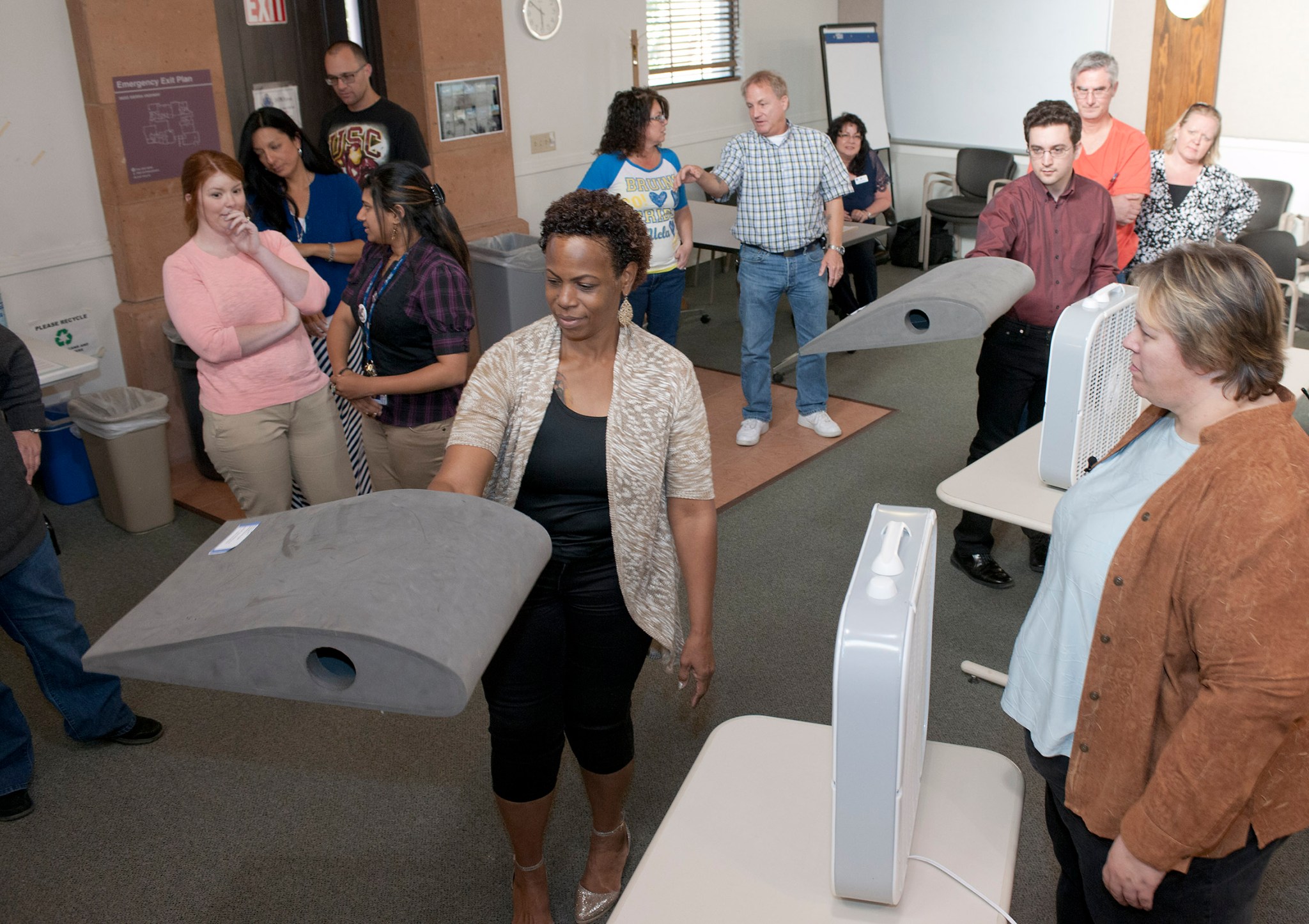The final of three aeronautical educator workshops, “Winging It,” was held at the NASA Armstrong Flight Research Center’s Office of Education located at the Aerospace Education Research Operations (AERO) Institute in Palmdale, California, on Wednesday, April 8.
Regional teachers participated in the inquiry-based workshop addressing aeronautics and energy transfer as well as motions and forces. Educators engaged in hands-on, standards-aligned mathematics, and science and engineering activities that demonstrate the three axes of flight and the control surfaces that guide aircraft.
“This is the final educator workshop in the ‘NASA is With You When You Fly’ series,” said Barbie Buckner, education specialist. “The workshops provided practical experience and professional development for teachers to learn about the various aspects of aeronautics that they can directly apply to their classrooms.”
“Today we talked about the X-56A Multi-Utility Technology Testbed (MUTT) and the research that NASA has planned for it,” Buckner said. “Tomorrow the X-56A is scheduled to make its first flight at NASA Armstrong. Now that is providing educators with real-time access to research that is occurring right here in the Antelope Valley.”
The workshop featured the X-56A due to the project’s research into wing flutter, a basic aeronautical concept, which introduced the agency’s aeronautics’ “Museum in the Box” curriculum as well as highlights from various missions at Armstrong.
“This workshop was not only interesting, but useful to me as a teacher because I can use the activities I have learned here for my classroom,” said John Faber, Burroughs High School in Ridgecrest, California. “I think these will be engaging activities for my students.”
Museum in a Box is an aeronautics hands-on lesson plan and activities that are tied to Kindergarten through 12th grade national education standards. Topics include forces and motion, control surfaces, propulsion, history of flight and other flight-related concepts.
“Really glad that this was facilitated almost as a real class, which makes it easier for me to see how to adjust or use it in my own classroom, said Archana Venugopal, Palmdale Aerospace Academy.” She added,“ also loved all the hand-on portions and how it was tied back to real and relevant information about planes.”
The X-56A Multi-Utility Technology Testbed (MUTT) is a small, remotely piloted experimental aircraft developed by Lockheed Martin Skunk Works for the Air Force Research Laboratory. The subscale aircraft is 7.5 feet long, has a 28-foot wingspan, weighs about 480 pounds, and is powered by two small 90-pound thrust JetCat P400 turbojet engines.
The goal of the X-56A project is to advance aeroservoelastic technology through flight research using a low-cost, modular, remotely piloted aircraft.
Aeroservoelasticity involves the interaction of an airplane’s computer-driven flight controls with the response of non-rigid structures to aerodynamic forces. The aircraft is being tested using flight profiles where flutter occurs in order to demonstrate that onboard instrumentation can not only accurately predict and sense the onset of wing flutter, but also be used by the control system to actively suppress aeroelastic instabilities. (https://www.nasa.gov/centers/armstrong/research/X-56/)
“I love the NASA workshops and Barbie’s enthusiastic attitude!” exclaimed Stephanie Faber, Discovery School, Lancaster, California. “She sees things from NASA’s view and a teacher’s standpoint. I teach 8th grade math, science and STEM (Science, Technology, Engineering and Math) with a focus on flight and space. I can use everything I’ve learned from all of these NASA Workshops!”






























